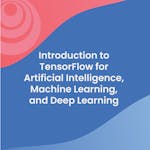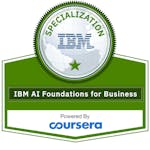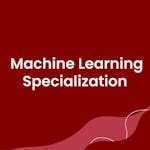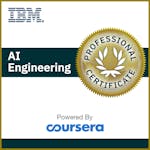Artificial Intelligence Definitions: A to Z Glossary Terms
Interested in Artificial Intelligence, but you keep seeing terms unfamiliar to you? This A-to-Z glossary defines key AI terms you need to know.
AI enthusiasts engage in developing, implementing, and managing artificial intelligence applications. They harness AI programming languages, frameworks, and libraries to create cutting-edge solutions, conduct extensive testing, and collaborate seamlessly with development teams.
This artificial intelligence glossary can be helpful if you want to get familiar with basic terms and advance your understanding of artificial intelligence.
Artificial Intelligence Definitions: A to Z Glossary Terms
Interested in Artificial Intelligence, but you keep seeing terms unfamiliar to you? This A-to-Z glossary defines key AI terms you need to know.
AI enthusiasts engage in developing, implementing, and managing artificial intelligence applications. They harness AI programming languages, frameworks, and libraries to create cutting-edge solutions, conduct extensive testing, and collaborate seamlessly with development teams.
This artificial intelligence glossary can be helpful if you want to get familiar with basic terms and advance your understanding of artificial intelligence.
Artificial Intelligence Terms
AI (Artificial Intelligence)
AI, or Artificial Intelligence, refers to the simulation of human intelligence in machines programmed to perform tasks that typically require human intelligence. These tasks may include learning from experience, recognizing patterns, understanding natural language, problem-solving, and decision-making. AI encompasses various techniques such as machine learning, natural language processing, computer vision, and robotics.
Backpropagation
Backpropagation is a supervised learning algorithm in artificial neural networks. It involves propagating errors backward through the network during the training process to adjust the weights of the network's connections. This iterative process helps the network learn and improve its performance on tasks like classification and regression.
Chatbot
A Chatbot is an AI-powered software application that simulates human-like conversations with users through natural language processing. Chatbots can be used for customer support, information retrieval, and personalized interactions. They are often integrated into websites, messaging platforms, and virtual assistants.
Deep Learning
Deep Learning is a subset of machine learning that utilizes artificial neural networks to learn and represent complex patterns and features from large amounts of data. Deep learning models have multiple hidden layers, enabling them to automatically extract hierarchical representations, making them suitable for image and speech recognition tasks.
Expert System
An Expert System is an AI program designed to mimic the decision-making ability of a human expert in a specific domain. It uses a knowledge base, a set of rules, and an inference engine to analyze data and provide recommendations or solutions to complex problems.
Fuzzy Logic
Fuzzy Logic is a mathematical approach that deals with uncertainty and imprecision in data. It allows variables to take on partial truth values between 0 and 1 rather than strict binary values. Fuzzy logic is used in AI applications where precise definitions are challenging or when dealing with linguistic terms.
Genetic Algorithm
Genetic Algorithm is a search and optimization technique inspired by natural selection and genetics. It involves evolving a population of candidate solutions through selection, crossover, and mutation. Genetic algorithms are commonly used to find optimal solutions for complex problems.
Heuristic Search
Heuristic Search is a problem-solving technique employing rules of thumb or heuristics to navigate a search space efficiently. AI often uses it to find approximate solutions to complex problems where an exhaustive search is impractical.
Image Recognition
Image Recognition is a subfield of computer vision that focuses on training AI models to identify and categorize objects, patterns, or features within images. AI-powered image recognition has applications in various industries, such as health care, automotive, and security.
Java AI
Java AI refers to implementing artificial intelligence techniques using the Java programming language. Java provides libraries and frameworks that support AI development, making it a popular choice for building AI applications.
Knowledge Representation
Knowledge Representation involves organizing and structuring information in a format that AI systems can understand and manipulate. AI programs can reason, infer, and make decisions based on acquired knowledge.
Logic Programming
Logic Programming is a paradigm in AI where programs are written as logical statements and rules. It uses formal logic to perform automated reasoning and problem-solving.
Machine Learning
Machine Learning is a subset of AI that focuses on training algorithms to learn patterns and make predictions from data without being explicitly programmed. Depending on the learning process, machine learning algorithms can be supervised, unsupervised, or semi-supervised.
Natural Language Processing (NLP)
Natural Language Processing is a branch of AI that interacts with computers and human language. NLP enables AI systems to understand, interpret, and generate human language, making it essential for applications like speech recognition, language translation, and sentiment analysis.
Ontology
In AI, Ontology is a formal representation of knowledge that defines concepts, relationships, and properties within a specific domain. Ontologies help AI systems understand the meaning and context of data, facilitating accurate information retrieval and reasoning.
Pattern Recognition
Pattern Recognition involves the identification of regularities or recurring patterns in data. AI algorithms for pattern recognition are widely used in image and speech processing, anomaly detection, and data classification.
Quantum Computing
Quantum Computing is an emerging field of computing that leverages the principles of quantum mechanics to perform computations. Quantum computers have the potential to solve complex problems much faster than classical computers, including optimization and machine learning tasks.
Reinforcement Learning
Reinforcement Learning is a type of machine learning where an agent interacts with an environment and learns to make decisions through trial and error. The agent receives feedback through rewards or penalties, guiding its learning process to maximize cumulative rewards.
Semantic Web
The Semantic Web is an extension of the World Wide Web that aims to add meaning and context to web data, enabling computers to understand and process information more effectively. Semantic web technologies facilitate the exchange and integration of data across different applications and domains.
Turing Test
The Turing Test, proposed by Alan Turing, is a test of a machine's ability to exhibit intelligent behavior indistinguishable from a human's. If a machine can convince a human evaluator that it is human through natural language conversations, it is said to have passed the Turing Test.
Unsupervised Learning
Unsupervised Learning is a type of machine learning where the algorithm is trained on unlabeled data and seeks to identify patterns and structures in the data without explicit guidance. It is used for clustering, dimensionality reduction, and anomaly detection.
Virtual Assistant
A Virtual Assistant is an AI-powered software application designed to perform tasks or provide user information through voice or text interactions. Virtual assistants can assist with various tasks, such as setting reminders, answering questions, and controlling smart home devices.
Watson AI
Watson AI is IBM's suite of AI services and tools that leverage machine learning, natural language processing, and computer vision. Watson AI is used for diverse applications, including health care, customer support, and data analytics.
XGBoost
XGBoost is a popular open-source machine-learning library known for its efficiency and performance in handling structured data. It is widely used for regression, classification, and ranking tasks, especially in Kaggle competitions and real-world applications.
Zero-shot Learning
Zero-shot Learning is a type of machine learning where a model can classify data it has not seen during training. Zero-shot learning leverages transfer education and semantic relationships to predict novel classes based on the knowledge learned from seen lessons.
Conclusion
Congratulations on completing the A-to-Z glossary of Artificial Intelligence terms! You now have a comprehensive understanding of key concepts and terminologies in AI. Whether you're a beginner exploring the basics of AI or an experienced practitioner seeking to deepen your knowledge, this glossary will serve as a valuable resource to enhance your understanding and proficiency in the fascinating world of Artificial Intelligence. Embrace the power of AI and continue exploring its applications in various industries and domains!
Learn in-demand artificial intelligence skills from industry leaders.
Artificial Intelligence Courses | Machine Learning Courses | Deep Learning Courses | Data Science Courses | Python Courses | ChatGPT Courses | Natural Language Processing (NLP) Courses | TensorFlow Courses | Data Analysis Courses | R Programming Courses | PyTorch Courses
 Join a community of over 100 million learners from around the world
Join a community of over 100 million learners from around the world Learn from more than 200 leading universities and industry educators.
Learn from more than 200 leading universities and industry educators. 70% of all learners who have stated a career goal and completed a course report outcomes such as gaining confidence, improving work performance, or selecting a new career path.
70% of all learners who have stated a career goal and completed a course report outcomes such as gaining confidence, improving work performance, or selecting a new career path.- 100% online
- Flexible schedule
- Mobile learning
- Videos and readings from professors at world-renowned universities and industry leaders
- Practice quizzes
Can’t decide what is right for you?
Try the full learning experience for most courses free for 7 days.Register to learn with Coursera’s community of 87 million learners around the world








